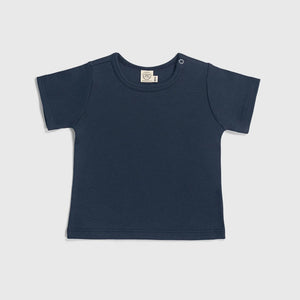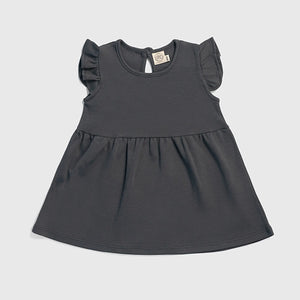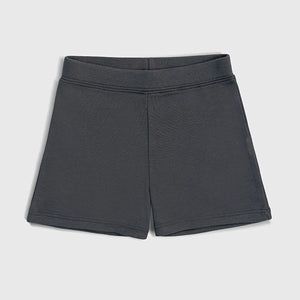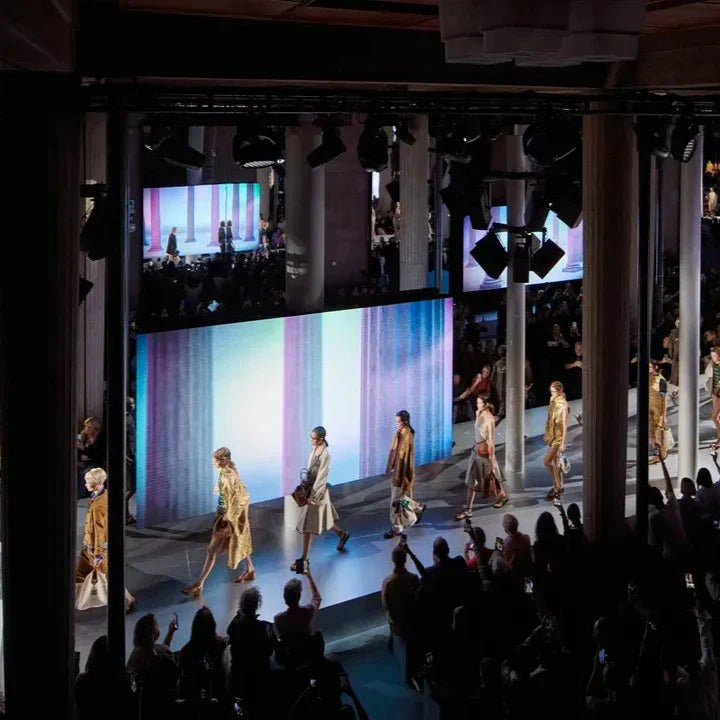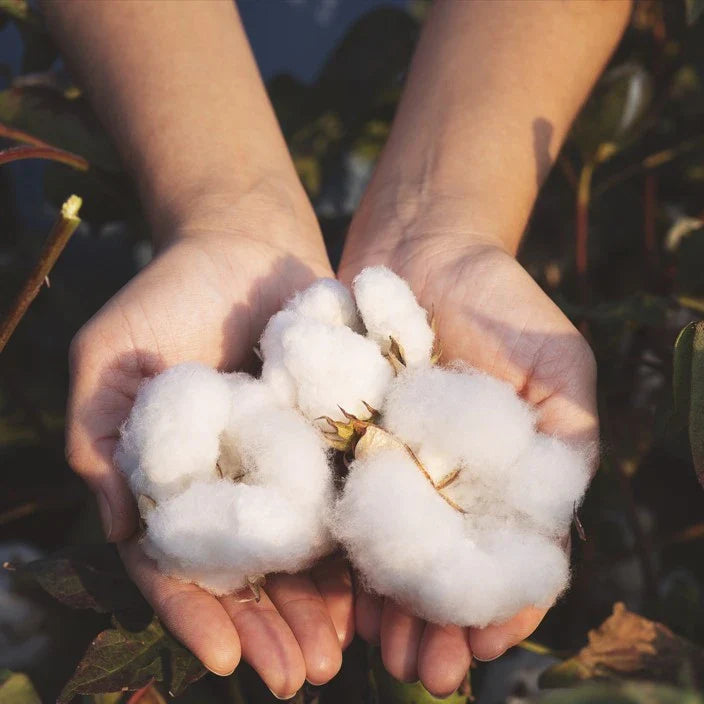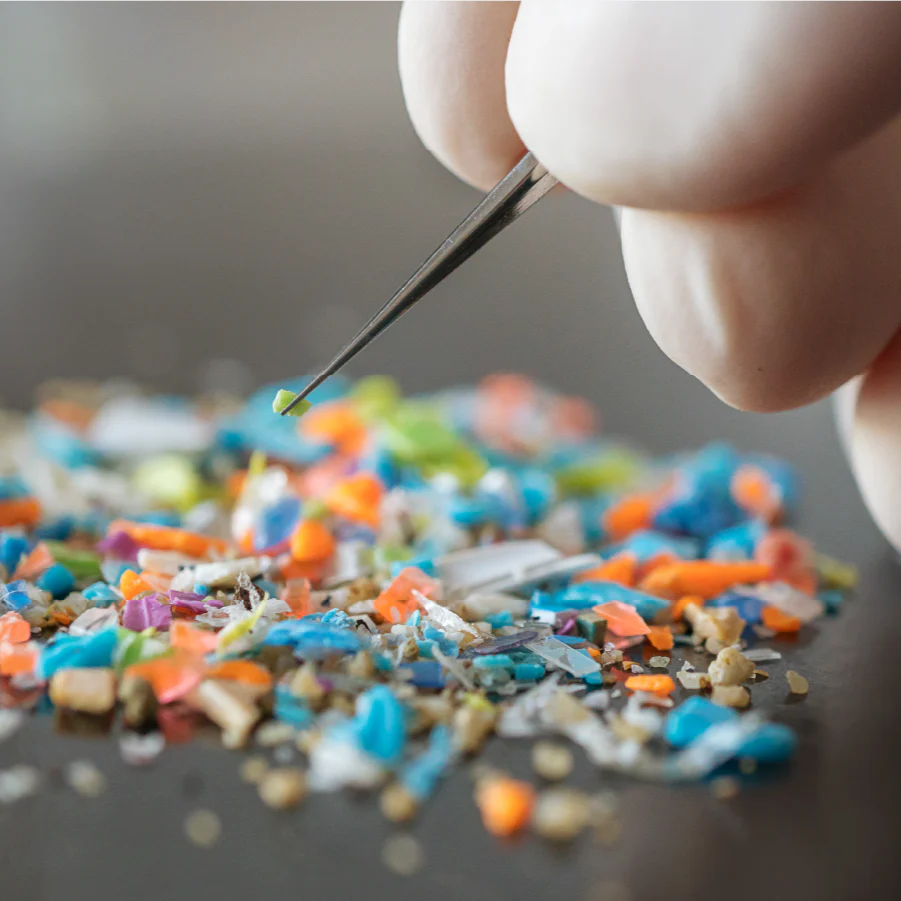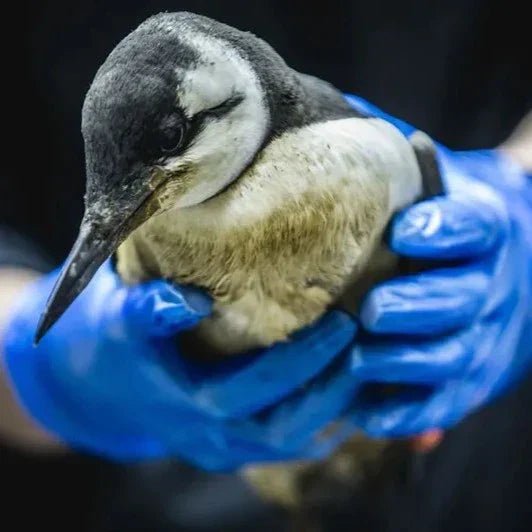World Wetlands Day:
A Call to Protect Earth's Vital Kidneys
.
AYA | FEBRUARY 2, 2025
READING TIME: 7 minutes
On February 2, World Wetlands Day is observed globally to raise awareness about the vital role wetlands play in maintaining ecological balance and supporting life on Earth. Although they cover only around 6 percent of the Earth’s land surface, 40 percent of all plant and animal species live or breed in wetlands [1], including migratory birds, fish, and a variety of plant life. Wetlands provide invaluable ecosystem services, playing a key role in water purification, flood regulation, carbon storage, and sustaining biodiversity [1,2]. Yet, these essential habitats are disappearing at an alarming rate—an issue that requires urgent global attention.
The Importance of Wetlands: A Lifeline for Biodiversity and Humans
Wetlands are freshwater ecosystems that include marshes, swamps, and peatlands. These areas are uniquely characterized by the land being covered by water—whether fresh, saline, or brackish—either seasonally or permanently. Wetlands are home to a diverse range of species and play an indispensable role in regulating the environment [1]. They are the planet’s natural water filtration systems and have been described as the “kidneys of the landscape.” Despite this, wetlands are often undervalued, leading to their widespread destruction [2,3,4].
Wetlands are essential for the survival of approximately 1 billion people worldwide, who depend on wetlands for food, clean water, and their livelihoods [1]. Wetlands also play a crucial role in supporting rice cultivation, a staple food for half the world’s population. This loss is especially worrying when you consider that wetlands are home to more than 10% of all known animal species and approximately 50% of all fish species [2]. A crucial example is the role wetlands play in the cultivation of rice, a staple food for half of the world’s population—the more wetland areas are depredated, the more work this crop will require and the more losses it will incur.

Picture by David Clode.
The Role of Wetlands in Carbon Sequestration
One of the most significant, yet often overlooked, functions of wetlands is their role in carbon storage. Wetlands contain between 20-30% of the world's carbon pool—much more than any other terrestrial ecosystem [4,5]. This makes them vital in the fight against climate change. Wetlands help mitigate global warming by sequestering large amounts of carbon in their soils and vegetation. They play a critical role in regulating greenhouse gases such as methane, carbon dioxide, and nitrous oxide [5,6].
While wetlands can release methane—a potent greenhouse gas—, they also sequester far more carbon dioxide, making them net carbon sinks. Healthy wetlands are crucial for maintaining a balance in the carbon cycle, helping to reduce the impacts of climate change. Yet, when wetlands are drained or damaged, this stored carbon is released back into the atmosphere, exacerbating global warming [4,5,6,7].
Wetlands and Water Purification
In addition to their carbon storage capabilities, wetlands are natural water purifiers. They trap pollutants like phosphorus, heavy metals, and other contaminants, helping to keep our water clean. Wetlands transform nitrogen into a form that plants can use, which supports both local ecosystems and human communities. They also break down bacteria through physical and chemical processes [6,7,8].
For example, New York City found that by purchasing and preserving wetland areas around its reservoirs, it could save billions of dollars in wastewater treatment infrastructure. These natural filters provide an environmentally friendly, cost-effective solution to water purification, demonstrating how wetlands contribute to the health of urban and rural communities alike [2].

New York's Wastewater Treatment Infrastructure. Picture by Annj AD.
The Threats Facing Wetlands
Despite their many benefits, wetlands are facing numerous threats, primarily from human activity. The destruction of wetlands is occurring at an alarming rate, with these ecosystems disappearing three times faster than forests. Between 1970 and 2020, approximately 35% of the world's wetlands were lost [9]. The main culprits include agricultural expansion, urban development, pollution, climate change, overfishing, and the introduction of invasive species [5,9].
Wetland degradation can take many forms, including habitat loss from the draining of land for agriculture, the filling of wetlands for construction, and contamination from industrial and agricultural runoff [5,9,10]. In addition, climate change impacts such as altered rainfall patterns, rising temperatures, and more frequent extreme weather events are exacerbating the threats to wetlands [9].
Wetlands: Natural Defenders Against Extreme Weather Events
Beyond water purification and carbon storage, wetlands also provide critical protection against natural disasters, such as floods and coastal storms [9,11]. Their ability to absorb excess water helps prevent flooding in nearby communities. In coastal areas, wetlands act as buffers against storm surges and erosion, protecting both human settlements and wildlife [9]. The intricate network of plants and soils in wetlands helps stabilize shorelines, making them vital for mitigating the effects of extreme weather events that are becoming more frequent due to climate change [7].

Picture by Christian Ter Maat.
Changing Demographics and Preferences
The pandemic also highlighted shifting demographics in the fashion market. Younger consumers, particularly Gen Z and Millennials, became increasingly influential in shaping purchasing trends. Research from the Institute for Sustainable Fashion indicates that younger generations are more likely to support sustainable brands, with 83% of Millennials stating they prefer to buy from companies that share their values [7,8].
Moreover, with the rise of remote work, many consumers reported a preference for comfort over style. A study published in the Journal of Fashion Marketing and Management noted that comfort became the primary driver of clothing purchases for many consumers, with 65% prioritizing comfort in their buying decisions [9]. This trend is likely to persist as remote work becomes a more permanent aspect of many industries.

Changing Demographics and Preferences
The pandemic also highlighted shifting demographics in the fashion market. Younger consumers, particularly Gen Z and Millennials, became increasingly influential in shaping purchasing trends. Research from the Institute for Sustainable Fashion indicates that younger generations are more likely to support sustainable brands, with 83% of Millennials stating they prefer to buy from companies that share their values [7,8].
Moreover, with the rise of remote work, many consumers reported a preference for comfort over style. A study published in the Journal of Fashion Marketing and Management noted that comfort became the primary driver of clothing purchases for many consumers, with 65% prioritizing comfort in their buying decisions [9]. This trend is likely to persist as remote work becomes a more permanent aspect of many industries.

Changing Demographics and Preferences
The pandemic also highlighted shifting demographics in the fashion market. Younger consumers, particularly Gen Z and Millennials, became increasingly influential in shaping purchasing trends. Research from the Institute for Sustainable Fashion indicates that younger generations are more likely to support sustainable brands, with 83% of Millennials stating they prefer to buy from companies that share their values [7,8].
Moreover, with the rise of remote work, many consumers reported a preference for comfort over style. A study published in the Journal of Fashion Marketing and Management noted that comfort became the primary driver of clothing purchases for many consumers, with 65% prioritizing comfort in their buying decisions [9]. This trend is likely to persist as remote work becomes a more permanent aspect of many industries.

Changing Demographics and Preferences
The pandemic also highlighted shifting demographics in the fashion market. Younger consumers, particularly Gen Z and Millennials, became increasingly influential in shaping purchasing trends. Research from the Institute for Sustainable Fashion indicates that younger generations are more likely to support sustainable brands, with 83% of Millennials stating they prefer to buy from companies that share their values [7,8].
Moreover, with the rise of remote work, many consumers reported a preference for comfort over style. A study published in the Journal of Fashion Marketing and Management noted that comfort became the primary driver of clothing purchases for many consumers, with 65% prioritizing comfort in their buying decisions [9]. This trend is likely to persist as remote work becomes a more permanent aspect of many industries.

Microplastic Pollution: A Growing Threat to Wetland Ecosystems
An emerging issue for wetlands is the accumulation of microplastics, which have been found to be pervasive in estuarine and freshwater wetlands. These tiny particles, which originate primarily from land-based sources like urban run off and wastewater, are now being discovered in wetlands around the world. Wetlands serve as both sinks and filters for microplastics, trapping them in soils and plant material. However, the long-term impact of microplastics on wetland ecosystems remains largely unknown [6,7,8,11].
In addition to their carbon storage capabilities, wetlands are natural water purifiers. They trap pollutants like phosphorus, heavy metals, and other contaminants, helping to keep our water clean. Wetlands transform nitrogen into a form that plants can use, which supports both local ecosystems and human communities. They also break down bacteria through physical and chemical processes [6,7,8].

Scanning Electron Microscope (SEM) image of microplastic particles obtained from Cromhall integrated constructed wetland (ICW) with visible biofilm formation and surface defragmentation. Source: http://dx.doi.org/10.1016/j.scitotenv.2022.160113
The Urgent Need for Wetland Conservation
The loss of wetlands is not only a loss of biodiversity but also a loss of ecosystem services that are essential for human survival. Wetlands are vital for maintaining water quality, regulating floods, supporting biodiversity, and combating climate change [1,2]. Protecting and restoring wetlands must become a global priority if we are to ensure a sustainable future for both nature and humanity.
Organizations like the Ramsar Convention on Wetlands and UNESCO are working to protect wetland ecosystems worldwide. Wetlands have been designated as Ramsar sites, UNESCO World Heritage sites, and Biosphere Reserves to safeguard their ecological, cultural, and economic values [3,9,12]. International cooperation is essential to ensure the long-term conservation of these ecosystems and the vital services they provide.
AYA’s Commitment to Wetland Conservation
At AYA, sustainability is at the heart of everything we do. As a brand dedicated to creating high-quality, eco-friendly fashion from organic cotton and alpaca wool, we recognize the importance of preserving the natural world, including wetlands. Our commitment to sustainability extends beyond the materials we use and the ethical production practices we support. We believe in the responsibility of businesses to protect the environment and contribute to the global efforts to combat climate change.
We are committed to educating our community about the importance of wetlands, and we encourage our customers to support efforts to protect these essential ecosystems. Through thoughtful actions and conscious choices, we can all contribute to the preservation of wetlands and the health of our planet.
In celebrating World Wetlands Day, AYA reaffirms its commitment to a future where both nature and fashion can thrive sustainably, hand in hand. Let us all work together to protect the wetlands—our planet’s most valuable and threatened ecosystems—so that they can continue to provide their essential services for generations to come.

In celebrating World Wetlands Day, AYA reaffirms its commitment to a future where both nature and fashion can thrive sustainably, hand in hand. Let us all work together to protect the wetlands—our planet’s most valuable and threatened ecosystems—so that they can continue to provide their essential services for generations to come.
Glossarykeywords
Carbon Cycle:
It is the process by which carbon atoms move between the atmosphere, living organisms, and the Earth's surface.
Carbon Storage:
It is the process of capturing and storing carbon dioxide to reduce the amount of greenhouse gases in the atmosphere. This process is also known as carbon sequestration.
Drain:
Cause the water or other liquid in (something) to run out, leaving it empty, dry, or drier.
Ecosystem Services:
These are the benefits that ecosystems provide to human beings. They are the result of interactions between relief, climate and biodiversity.
Estuarines:
They are bodies of water where fresh water from rivers mixes with salt water from the sea. They are very productive ecosystems that are home to unique communities of plants and animals.
Freshwater Wetlands:
They are areas of land or water that are saturated with freshwater, either seasonally or permanently.
Global Warming:
Results from the increasing concentration of carbon dioxide (CO2) and other greenhouse gases that trap heat in the earth's
Greenhouse gas emissions (GHG):
Trap heat and keep the planet warmer than it would be without it.
Marshes:
It is a type of wetland, an area of land where water covers the ground for long periods of time.
Microplastics:
Tiny plastic particles, smaller than 5mm, found in the environment from the breakdown of larger plastics or industrial processes.
Mitigation:
It is the reduction of vulnerability, that is, the attenuation of potential damage to life and property caused by a geological, hydrological or health event.
Peatland:
They are terrestrial wetland ecosystems in which waterlogged conditions prevent plant material from fully decomposing.
Radiative Forcing:
Radiative forcing or climatic forcing is the difference between the insolation (sunlight) absorbed by the Earth and the energy radiated back.
Swamps:
They are wetlands with trees and shrubs
Wastewater Treatment Infrastructure (WWTI):
They are a network of pipes and facilities that collect and treat wastewater from homes, businesses, and industries
Glossarykeywords
Carbon Cycle:
It is the process by which carbon atoms move between the atmosphere, living organisms, and the Earth's surface.
Carbon Storage:
It is the process of capturing and storing carbon dioxide to reduce the amount of greenhouse gases in the atmosphere. This process is also known as carbon sequestration.
Drain:
Cause the water or other liquid in (something) to run out, leaving it empty, dry, or drier.
Ecosystem Services:
These are the benefits that ecosystems provide to human beings. They are the result of interactions between relief, climate and biodiversity.
Marshes:
It is a type of wetland, an area of land where water covers the ground for long periods of time.
Microplastics:
Tiny plastic particles, smaller than 5mm, found in the environment from the breakdown of larger plastics or industrial processes.
Mitigation:
It is the reduction of vulnerability, that is, the attenuation of potential damage to life and property caused by a geological, hydrological or health event.
Peatland:
They are terrestrial wetland ecosystems in which waterlogged conditions prevent plant material from fully decomposing.
Radiative Forcing:
Radiative forcing or climatic forcing is the difference between the insolation (sunlight) absorbed by the Earth and the energy radiated back.
Swamps:
They are wetlands with trees and shrubs
Wastewater Treatment Infrastructure (WWTI):
They are a network of pipes and facilities that collect and treat wastewater from homes, businesses, and industries
References:
[1] United Nations. World Wetlands Day [Internet]. 2025 [cited 2025 Jan 31]. Available from: https://www.un.org/en/observances/world-wetlands-day
[2] World Wildlife Fund. What is a wetland? And 8 other wetland facts [Internet]. 2025 [cited 2025 Jan 31]. Available from: https://www.worldwildlife.org/stories/what-is-a-wetland-and-8-other-wetland-facts
[3] Ramsar Convention Secretariat. Conservation of wetlands of India [Internet]. 2025 [cited 2025 Jan 31]. Available from: https://wgbis.ces.iisc.ac.in/energy/water/paper/conservation_wetlands/Conservation_of_wetlands_of_India.pdf
[4] Weber KP. Microbial community assessment in wetlands for water pollution control: Past, present, and future outlook. Water. 2016;8(11):503. doi: 10.3390/w8110503.
[5] Salimi S, Almuktar SAAAN, Scholz M. Impact of climate change on wetland ecosystems: A critical review of experimental wetlands. J Environ Manag. 2021;295:112160. doi: 10.1016/j.jenvman.2021.112160.
[6] Bydalek F, Ifayemi D, Reynolds L, et al. Microplastic dynamics in a free water surface constructed wetland. Sci Total Environ. 2022;838:160113. doi: 10.1016/j.scitotenv.2022.160113.
[7] Yu H, Qi W, Cao X, Hu J, Li Y, Peng J, Hu C, Qu J. Microplastic residues in wetland ecosystems: Do they truly threaten the plant-microbe-soil system? Environ Int. 2021;156:106708. doi: 10.1016/j.envint.2021.106708.
[8] Almeida CMR, Sáez-Zamacona I, Silva DM, Rodrigues SM, Pereira R, Ramos S. The role of estuarine wetlands (saltmarshes) in sediment microplastics retention. Water. 2023;15(7):1382. doi: 10.3390/w15071382.
[9] Haarstad K, Bavor HJ, Mæhlum T. Organic and metallic pollutants in water treatment and natural wetlands: a review. Water Sci Technol. 2012;65(1):76-99. doi: 10.2166/wst.2011.831.
[10] Mitsch W. Wetlands and climate change. Available from: https://www.researchgate.net/profile/William-Mitsch/publication/291586979_Wetlands_and_Climate_Change/links/56a6e8c808aeded22e3548e3/Wetlands-and-Climate-Change.pdf
[11] Calzadilla Cabrera D, Wang Q, Martín M, Oliver Rajadel N, Rousseau DPL, Hernández-Crespo C. Microplastics occurrence and fate in full-scale treatment wetlands. Water Res. 2023; 239:120106. doi: 10.1016/j.watres.2023.120106.
[12] UNESCO. World Heritage and Wetlands. UNESCO World Heritage Centre; 2023. Available from: https://whc.unesco.org/fr/actualites/2740
You don't have to put all the weight on your shoulders. Every action counts. At AYA, we fight microplastic pollution by making a 100% plastic-free catalog.
Visit Our Shop →You May Also Like to Read...
Paris Fashion Week 2025: Can Sustainable Fashion Replace Glamour?
Explore the environmental impact of Paris Fashion Week 2025, from carbon footprints to textile waste. Are luxury brands balancing glamour with eco-friendly practices?
Sustainable Fashion Insights for World Environment Day
Discover how sustainable fashion—using organic cotton, natural dyes, and local production—is shaping a regenerative future for World Environment Day.
The Health Risks of Synthetic Fibers & Microplastics
Explore the health impacts of synthetic fibers—respiratory damage, gut disruption, and hormonal imbalance—and how to switch to safe, natural alternatives.
Fast Fashion and Biodiversity Loss
Fast fashion is accelerating ecosystem destruction, from deforestation to ocean pollution. Discover how this industry is contributing to global biodiversity loss.






